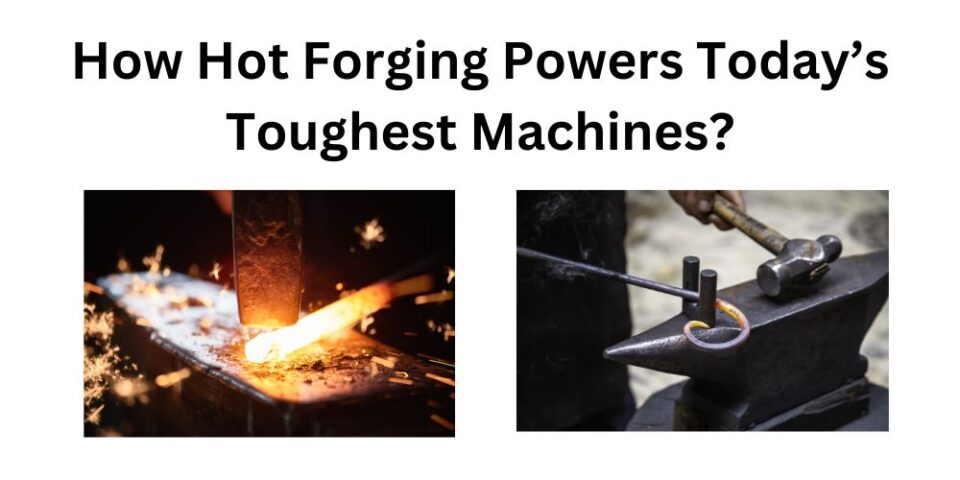In the world of heavy-duty machinery and high-performance automotive parts, toughness is everything. Hot forging Parts that go into these applications need to withstand intense pressures, high temperatures, and constant wear and tear. That’s where hot forging comes in—a process that’s all about crafting metal parts that can take on the toughest jobs out there.
So, What Exactly is Hot Forging?
Hot forging might sound like something out of a blacksmith’s workshop, but it’s actually a high-tech process used by hot forging manufacturers all over the world. Basically, hot forging involves heating metal (often steel) to extreme temperatures, making it malleable enough to shape under massive pressure without cracking. When done right, it produces parts that are incredibly strong, durable, and resistant to wear.
Imagine the gears, shafts, and bolts that are used in the engines of our cars or the arms of construction cranes. They have to endure extreme conditions every day. With hot forging, these parts don’t just survive—they thrive. The heat and pressure realign the metal’s internal grain structure, giving it a whole new level of toughness.
Why Hot Forging is the Go-To Choice for Heavy-Duty Parts
One of the reasons hot forging has become so popular with hot forging suppliers and in heavy-duty industries is its ability to produce parts that hold up under serious stress. Take car engines, for example. They’re packed with forged automotive components like crankshafts, gears, and connecting rods, all of which have to handle extreme pressure without breaking down. Hot-forged parts can take that beating and keep on going, which translates into fewer repairs and longer-lasting equipment.
But it’s not just about strength. Hot forging also allows forging parts manufacturers to create custom shapes and sizes with high precision. This is especially important for industries like aerospace and automotive, where every millimeter counts and even tiny defects could mean big problems down the line. A well-forged part is not only strong but also incredibly accurate, and that’s a big part of what makes hot forging so reliable.
The Hot Forging Process—How It’s Done
For those curious about the details, here’s how it works in a nutshell:
- Heat the Metal: The metal, whether it’s steel, aluminum, or an alloy, is heated to a temperature above its “recrystallization point,” which softens it up for shaping.
- Apply Massive Pressure: Once the metal is heated, it’s placed into a die and hit with tons of pressure, usually from a forging press or hammer. This is where the shaping happens, and the metal’s internal grain structure aligns to create extra strength.
- Cooling and Finishing: After it’s shaped, the part is cooled. Depending on the complexity of the part, there may be additional steps like machining to get the final details just right.
All of this makes the part incredibly tough, with a structure that’s less likely to crack or deform under stress. For hot forging suppliers who work with clients in heavy-duty industries, the end result is a part that can be trusted to perform, even under the roughest conditions.
Heavy Machinery and Automotive: Where Hot Forging Shines
The automotive and heavy machinery industries rely heavily on hot forging because they need parts that can take a beating. Think about it: if you’re operating a massive excavator or driving a powerful truck, you can’t afford for the critical components to fail. In cars, forged automotive components like transmission parts and suspension systems are under constant pressure and vibration. Hot forging makes them strong enough to handle those stresses day in and day out.
In heavy machinery, hot-forged parts are essential in equipment like bulldozers, cranes, and mining machinery. These machines are often in tough environments, handling tasks that demand extreme durability. Parts made from hot forging are ideal because they’re tough enough to handle harsh conditions without wearing down or breaking.
Choosing Reliable Hot Forging Suppliers
If you’re in an industry that relies on forged parts, picking the right forging parts suppliers or hot forging suppliers can make all the difference. Quality is everything in this field, and any defect in a forged part could lead to failure. A good supplier will work with high-quality materials, state-of-the-art equipment, and strict quality control to make sure their parts are up to the challenge.
Reputable hot forging manufacturers understand that customization matters, too. A lot of industries need parts that meet specific designs or have precise weight requirements. The right supplier will work closely with clients to create exactly what they need, whether it’s for an industrial pump, a truck engine, or a piece of mining equipment.
Looking Ahead: The Future of Hot Forging
Hot forging isn’t going anywhere anytime soon, and it’s actually getting even better. Advances in automation are making the process faster and more accurate, and new alloys are expanding what’s possible for heavy-duty applications. For forging parts manufacturers, these innovations mean they can meet tougher demands while also producing parts more efficiently and with less waste.
In the U.S., The American Iron and Steel Institute (AISI) provides guidelines and standards that help hot forging suppliers and manufacturers keep their parts up to par. These guidelines ensure that parts meet rigorous safety and quality requirements, which is crucial for keeping industries running smoothly and safely.
In the end, hot forging is a fascinating blend of ancient craftsmanship and modern technology, producing parts that keep our world moving—whether it’s powering a car, lifting heavy loads, or drilling deep into the earth.

